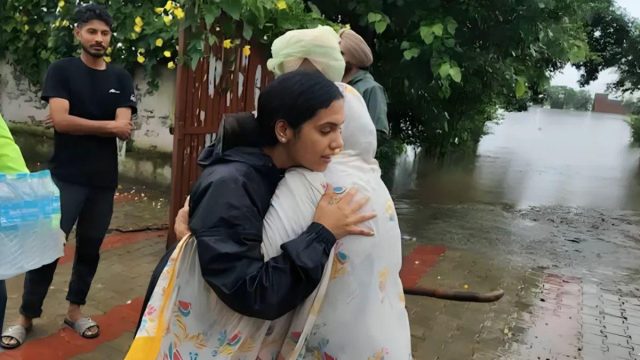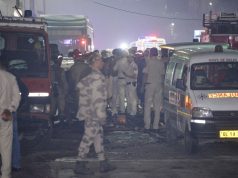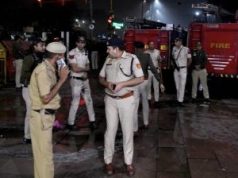How AAP’s Transparency Revolution is Empowering More Women in Public Service
Punjab E News: Women form barely 15–18% of Punjab’s bureaucratic workforce, and their representation in field and district-level administrative posts is even lower. According to recent employment data, women constitute about 11–13% of India’s civil services nationwide, and Punjab historically mirrors these national trends. Recognizing this clear gender gap, the Aam Aadmi Party (AAP) government in Punjab has launched a series of systematic transparency campaigns and grassroots initiatives aimed at empowering women—especially from rural areas—to pursue careers in administration. By showcasing successful women officers and creating a supportive work environment, the government is breaking long-standing barriers that once kept talented rural women away from public service.
Today, Punjab’s district administration reflects a transformative shift, with dynamic women Deputy Commissioners (DCs) leading several key districts. Amritsar DC Sakshi Sawhney, Hoshiarpur DC Komalpreet Kaur, and Mohali DC Komal Mittal represent a new generation of women administrators who are not just occupying top positions but redefining governance at the grassroots level. Their appointments under the current government have sent a powerful message to young women across thousands of villages—that the corridors of power are no longer a male domain. These officers manage districts with populations in the millions, handling everything from revenue administration to disaster management, proving that gender is no barrier to effective leadership.
Under DC Sakshi Sawhney’s leadership, Amritsar district has witnessed rapid developmental initiatives, focusing on modern infrastructure while preserving heritage. Sawhney has spearheaded digital governance campaigns that brought transparency to revenue records, enabling ordinary citizens—especially women property owners—to access land documents without middlemen. Her administration has worked to streamline the Public Distribution System (PDS) to ensure that benefits reach genuine beneficiaries. Improved inter-departmental coordination for implementing welfare schemes has been another hallmark, with a special focus on extending women and child development programmes to the remotest villages.
In Hoshiarpur, DC Komalpreet Kaur has infused remarkable energy into local administration, with a strong emphasis on rural development and agricultural modernization. Her regular field visits to villages have helped identify and resolve long-pending infrastructure issues—from broken roads to inadequate water supply systems. During her tenure, the district administration has worked closely with panchayats to enforce transparency in rural development schemes, sharing project allocations and progress reports through digital platforms. This approach has not only reduced corruption but also encouraged greater participation of women in local governance, as they now feel confident that their voices are heard and recorded.
DC Komal Mittal has introduced a technology-driven approach in the administration of Mohali, leveraging digital tools to make government services more accessible. Under her leadership, the district has implemented online systems for multiple citizen services, reducing the need for repeated visits to government offices—a major hurdle that particularly affected working women and those from distant villages. Her administration has prioritized the creation of safe public spaces, improved street lighting in rural areas, and ensured police responsiveness to women’s safety concerns. These measures have made public service a more viable and secure career path for young women in surrounding regions.
When Punjab faced severe floods during the monsoon season, these women DCs demonstrated exemplary crisis management skills. Sakshi Sawhney coordinated 24×7 relief operations in Amritsar, personally overseeing evacuation efforts and ensuring dignity and safety for women and children in relief camps. In Hoshiarpur, Aashika Jain mobilized resources and worked with local communities to prevent crop losses and provide immediate aid to affected farmers. In Mohali, Komal Mittal’s proactive approach included preventive measures and real-time monitoring systems that helped minimize flood impact. Their calm and decisive leadership during emergencies has become a case study in effective disaster management.
The AAP government’s transparency initiatives—including public hearings (Janata Darbars), online grievance redressal systems, and regular social media updates from district administrations—have demystified government functioning for ordinary citizens. These women DCs have been at the forefront of these public hearings, where villagers, especially women, can directly present their concerns without fear or bureaucratic hurdles. By making governance visible and accountable, these initiatives have shown rural families that government offices are safe, respectful workplaces where merit matters more than connections. Stories of these women officers traveling to remote villages, listening to problems, and delivering solutions have inspired countless young women to prepare for civil services.
The Punjab government’s approach—linking transparent governance with the active promotion of women into leadership roles—presents a model of empowerment across sectors. By ensuring that the appointment of women administrators is not merely symbolic but backed by full authority and responsibility, the AAP government is building institutional confidence in women’s leadership capabilities. As these Deputy Commissioners continue to deliver results in development, disaster management, and daily administration, they are not merely governing districts—they are changing mindsets and opening doors for the next generation of women civil servants. Their success stories stand as Punjab’s most powerful recruitment campaign for women in public service, proving that when given opportunity and support, women don’t just participate in governance—they excel in it. These leaders are inspiring countless others to step forward and lead.
























































